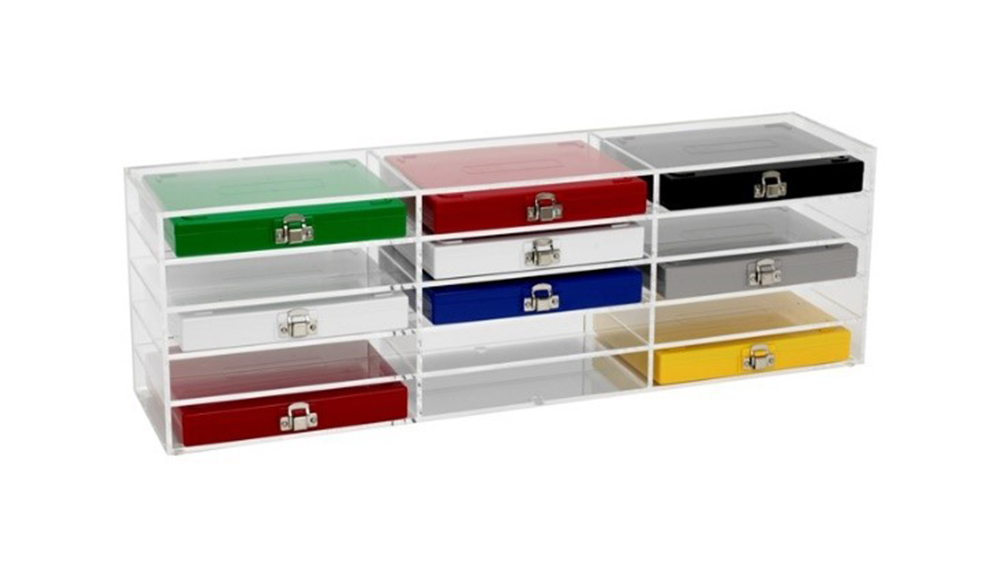During this season of viral pandemic crisis, we see healthcare being affected in numerous different ways; none more obvious than a reduction in non-essential surgeries, outpatient services, and physician office appointments. Subsequently this has grossly affected non-Covid-19 related laboratory testing. Hospital patient visits are down resulting in fewer routine lab tests in the clinical lab, and fewer tissue specimen analysis in the anatomic Histopathology lab. While the crisis is yet alarming and has oftentimes caused furloughing of staff, this downtime can be a productive moment that laboratory professionals rarely have to focus on restructuring and reorganizing the immediate work environment. Bench space is a precious commodity in most labs and workers are constantly being challenged to utilize every inch of space in their immediate environment. In Histopathology, particularly microtomy, the ‘economy of motion’ is essential in streamlining workflow efficiency so that workers can perform at a high rate of productivity without having to move from their seated positions. A Lean concept of reducing waste can be applied to address wasted motion. A streamlining principle of “3 / 180” can be applied to personal workspace which demonstrates a restricted
range of motion of 3-feet reach within a 180° angle from right to left. The image to the right illustrates that the worker would have all essential items and utensils necessary to perform microtomy within that 3-foot reach in a 180° range of accessibility. Due to social distancing precautions in the workplace, many laboratories have constructed plexiglass or walled partitions separating workers or

testing areas, further limiting personal workspace. Using the example of microtomy, Histologist are challenged to consolidate blades, sectioning utensils, ice trays, paraffin blocks, etc. in this limited workspace which is also reduced by the footprint of the microtome. Many of these challenges can be addressed with products designed for small space considerations.



The images to the above demonstrate utensils that can be consolidated with re-freezable ice trays, and paraffin blocks can be organized and managed in small tote trays before, during, and after microtomy, and easily facilitate block filing. In microtomy, blades are used and discarded continuously. The far-right image illustrates extra small Sharps containers for used blades and other sharp hazardous items and requires little space to accommodate it’s 3” wide by 3” deep and only 6.25” high.
In many research environments where a limited number of paraffin blocks would need to be accessed repeatedly while working on a specific study, small block storage areas would be useful in limiting the space needed. They can be accessed more readily than having to continue to pull blocks from archive storage rooms or off-site storage. Smaller block storage units can be employed that can hold up to 600 blocks in a small 8.25” wide by 14.4” deep footprint.

In general testing areas such as special/IHC staining, microscopy, etc., numerous slide boxes are often needed to accommodate the various control tissue slides run with the patient tests. These can be consolidated into a compact workspace through the use of acrylic slide box shelves that help organize and separate control groups.

When considering reorganizing workspace, we often focus on testing areas and omit the areas of maintenance and clean up of glassware and other items. Sinks are often cluttered and full of used coplin jars, beakers, flasks, etc. Dishwashing can present an extended problem of space needed to dry all the items. Some form of drying rack helps keep items centrally positioned and out of the way while drying, and facilitate

Reorganization is a constant endeavor which changes based on the addition or reassignment of duties in a given workspace. With the current concerns and re-evaluation of safety due to the pandemic crisis, technologists are forced to continually challenge the process and consider ways of enhancing safety and productivity at the same time. This pandemic downtime gives us time and opportunity to consider and implement new ideas of reorganization and consolidation in ways that we have not in the past. The challenge is to each and every laboratorian to take a moment and assess their workspace using the 3 by 180 concept and products designed for limited space; and create new and innovative methods to streamline your process. Reorganizing the lab, the ‘big stuff,’ is a daunting task, but reorganizing our independent workspaces, the ‘small stuff,’ is exciting and personal. I guarantee you will be amazed at the number of areas where you can think of improvements.

